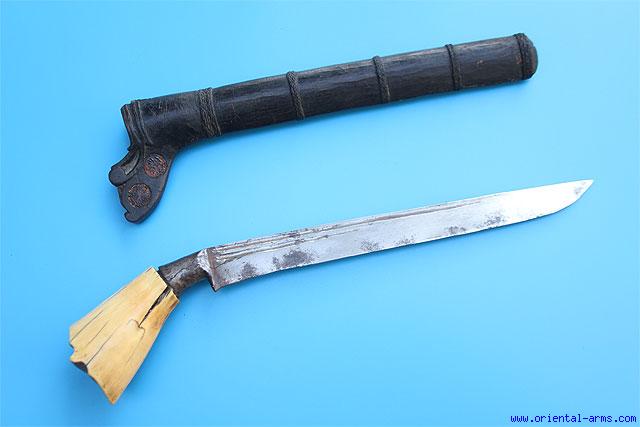
 |
|
|
|
|
#1 | |
|
Member
Join Date: Apr 2005
Posts: 3,255
|
Hello David,
Quote:
 Regards, Kai |
|
|
|

|
|
|
#2 | |
|
Keris forum moderator
Join Date: Aug 2006
Location: Nova Scotia
Posts: 7,261
|
Quote:
|
|
|
|

|
|
|
#3 |
|
Member
Join Date: Apr 2005
Posts: 3,255
|
Thanks, David!
Any different patina, marks, etc. visible along the stem? Regards, Kai |
|
|

|
|
|
#4 |
|
Keris forum moderator
Join Date: Aug 2006
Location: Nova Scotia
Posts: 7,261
|
Well, the exposed part of the stem has more patina than the unexposed part of the stem if that is what you mean.
|
|
|

|
|
|
#5 | |
|
Member
Join Date: Apr 2005
Posts: 3,255
|
Hello David,
Quote:
Any additional shadows? Regards, Kai |
|
|
|

|
|
|
#6 |
|
Member
Join Date: Feb 2020
Location: Vlissingen, Netherlands
Posts: 71
|
A nice Sewar, also called 'Siwar'. The term Tumbok Lada is known for a look-a-like of the Sewar,but with different thicker hilt and more straight blade. the Sewar ha a more curved blade and slimmer hilt and scabbard mouth. Many collectors mix these names up. They both come from Sumatra
Here a typical Tumbok lada (Oriental-Arms)  Here the Sewar or Siwar (my own) https://antiquesbythesea.nl/wp-conte...-1536x1028.jpg See the much more curved blade of the Sewar compared to the Tumbok Lada. Best regards, Peter |
|
|

|
 |
|
|